Your cart is currently empty!
Month: January 2014
-
Each Chicken Is Unique

Each Chicken Is Unique

Each Chicken Is Unique Each chicken is unique. Each chicken has its own face, its own personality. You can see their personality develop as chicks. Among siblings, there are outgoing chicks, quiet ones, curious ones, timid ones. As they grow, their personalities develop and in some cases change. Have a flock of chickens and you’ll never have a boring day.
-
Hanging Out With Mom
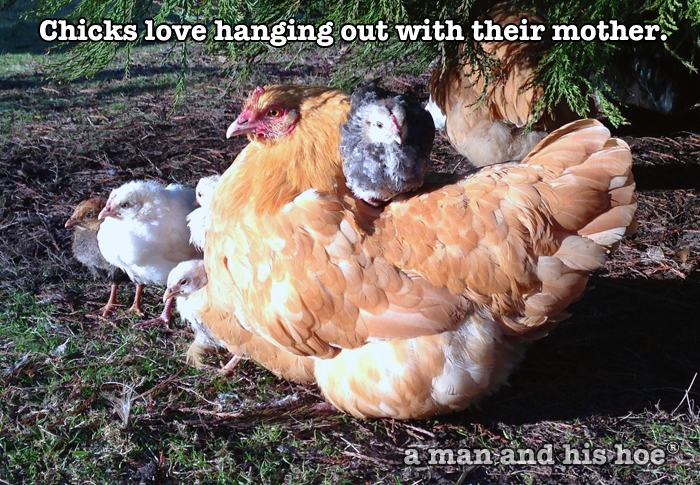
Hanging Out With Mom It doesn’t seem like January. The sun has been out all day and the chickens are having a great time. When you see how the chicks enjoy hanging out with their mother, even hopping on her back, isn’t it obvious that every chick deserves a mother?
Modern agriculture is all about efficiency. What is the least amount of feed we can give these chickens to raise them in the least amount of time to maximize profits? What is the least amount of money we can pay workers? What is the cheapest way we can ship this food? Those are the driving forces behind filling supermarkets with vast quantities of food. It’s not about maximizing your life and happiness.
But we are going to be on this planet for millions and millions of years to come. We need to expand our viewpoint and instead of running madly in a system driven by this quarter’s profits, we need to envision a system that will endure for millions of years and maximize happiness for everyone and everything, even the animals we raise. We are all interconnected in ways we can’t even imagine. Energy flows from one living thing to another. If you think about it, we are all just recycled chicken shit. The chickens eat the grains, the grasses, the berries. Their shit fertilizes the fields to grow incredible carrots, cabbages, and other vegetables. We eat those, so in a sense we are just eating recycled chicken shit. It all goes round and round. We all need to be healthy and happy, including the plants and animals we eat, to carry us through another million years.
[wpvideo kLXdDAHv]
-
Never a Dull Day
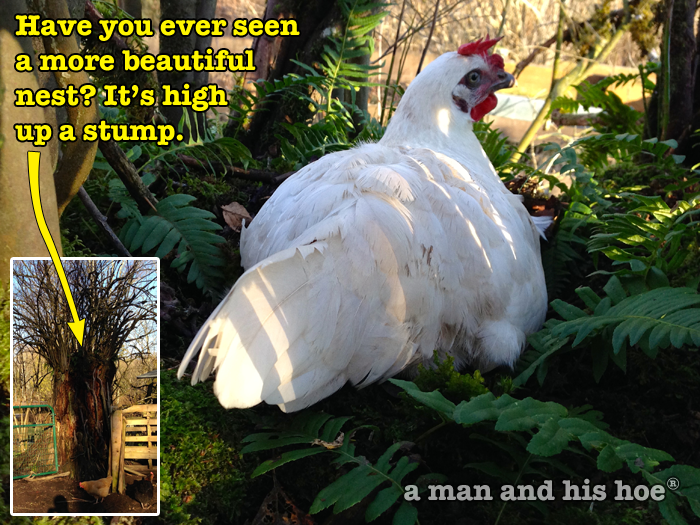
Nest High Up a Stump This is one of the hens laying in a beautiful, quiet nest high up a stump.
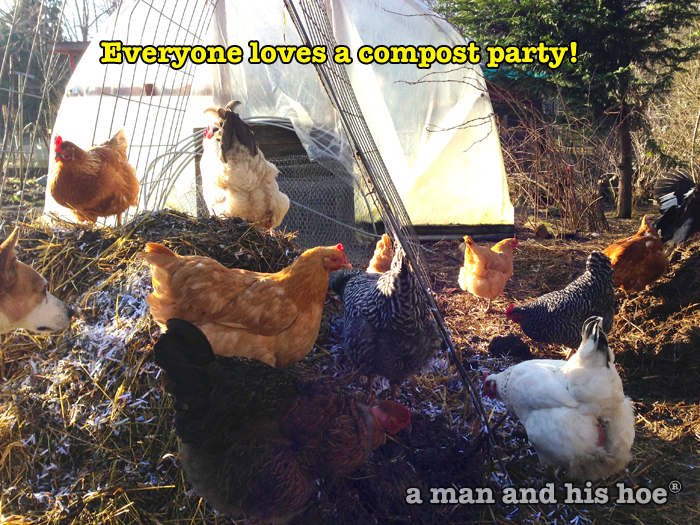
Everyone Loves Compost Chickens love it when you stir the compost and add to it. There are so many good things to eat, especially earthworms and insects. Even the dogs enjoy rooting through the compost.
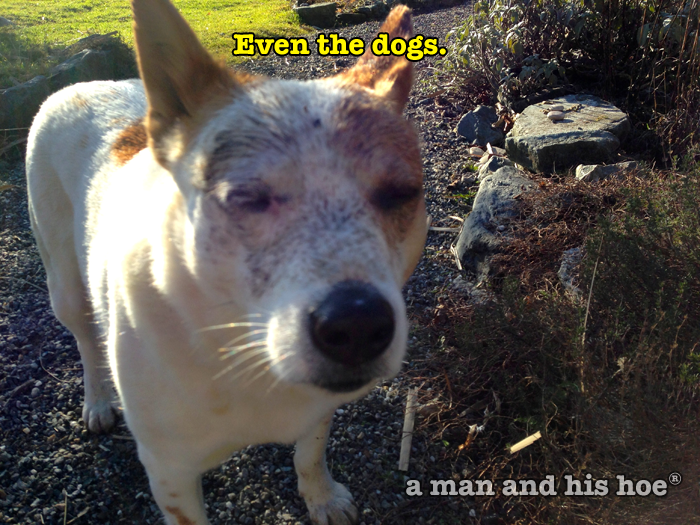
Even the Dogs Love Compost -
Learning How to Bathe

Learning to Bathe Chickens are born knowing how to take dirt baths, but when they get to learn this behavior from their mother, they sure enjoy it.
[wpvideo 1HZ05oVF]
-
Nest at the Top of a Stump

High up a stump Chickens are always looking for great places to build a nest. Yesterday I heard a white Bresse cackling by the side of a ten foot tall stump. I climbed up to the top and found a nest with eight eggs. Just one of the eggs was hers, the white egg. The mystery to uncover is what other hen has been laying eggs up there.
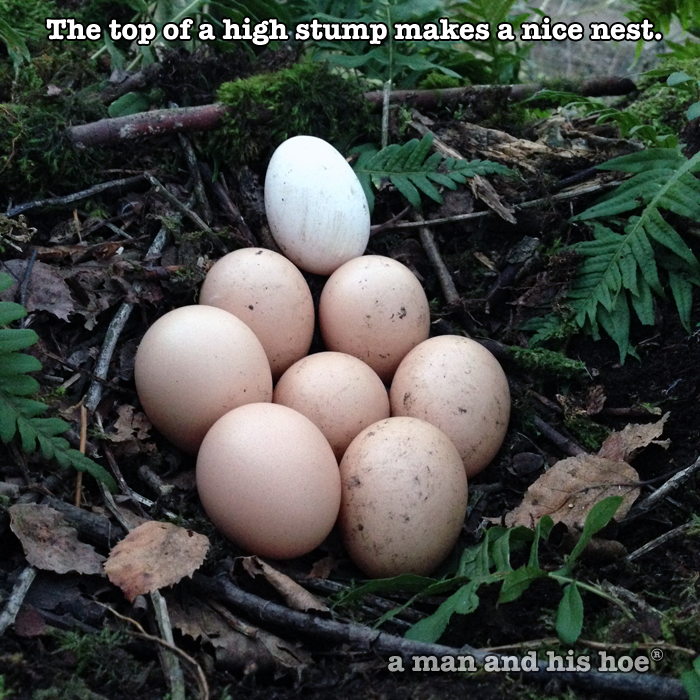
Nest at the top of a stump